The Oceanic Plasticarium
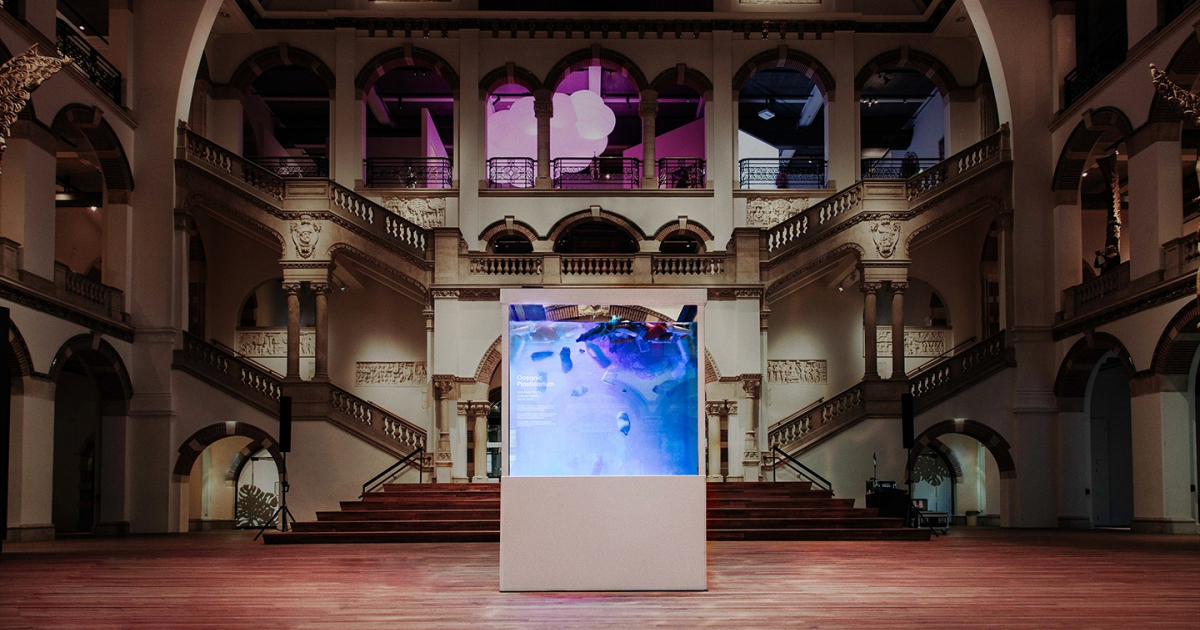
The Oceanic Plasticarium; a tiny sample of the millions of tons of plastic just like it in our oceans. Designed to help people comprehend the vastness of the problem and empower people to feel ownership for their part in the plastic problem.
By partnering with Greenpeace, Tropenmuseum, marine biologists and plastic soup experts, we created an exhibit at low cost but with high impact. Our collaborators shared their expert knowledge, offered access to plastic fished directly from the Great Pacific and the museum context strengthened our message. Inspiring viewers around the world to choose reusable (Dopper bottle) over single-use, and take that first step with Dopper to reduce their plastic footprint.
Although originally nationally focussed, with features in national news, titles in both print and online, it quickly gathered international coverage, most namely Fast Company.
The message reached 22.692.000 people, with an estimated media value of €250k.
(source: Meltwater Insight reports & desk research)
There were 11k+ visitors in the first 2 weeks, with a large number being school children on field trips to visit the exhibit as part of their education program. Educating the next generation to make a change.
Additional
The museum did not receive payment in any form for the placement, nor Greenpeace for providing the plastic from the Great Pacific from one of their boat expeditions.
The Oceanic Plasticarium was made with a small budget (12k) but with a desire to reach as many people as possible (zero media spend).
We met all the strict requirements to be recognised and accepted by museums as an exhibition piece, as the ambition is to tour multiple museums in Europe.
We are creating one of the most significant pieces of modern history: The Plastic Soup. A problem created together, but no-one feels ownership for. Floating deep in our oceans, out of sight and out of mind.
And because 99% of us will never experience it for ourselves, we decided to bring a section of plastic soup from far out in the Pacific Ocean, to the institutes founded to educate people about the history of mankind and nature. Filling in a crucial – but missing - part of history. Putting people, for the first time ever, eye to eye with the plastic soup.
Introducing The Oceanic Plasticarium; a tiny sample of the millions of tons of plastic just like
it in our oceans. Designed to help people comprehend the vastness of the problem and make it tangible for people. Empowering people to feel ownership for their part in the problem.
The Great Pacific Garbage patch has been estimated to cover an area greater than 3x the size of France, and is 1 of 5 country-sized giants just like it, floating on the surface of our oceans. Every year an extra 8 billion kgs of plastic waste enters our oceans. That's a truckload of plastic waste every minute. And in that same minute 1 million single-use plastic bottles are sold worldwide.
Deep-sea explorers have even found plastic waste in areas thought to be untouched by mankind due to their depth and, microplastics have been found to penetrate into our food systems. This problem, although massive, is still a dark secret, hidden far out of sight and out of mind.
Dopper, the social enterprise wanted to empower people to choose reusable over single-use water bottles by raising awareness about the pressing plastic problem playing out in our oceans. Challenge the phenomenon of “out of sight out of mind” and bringing people eye to eye with plastic pollution; sparking behavioral change.
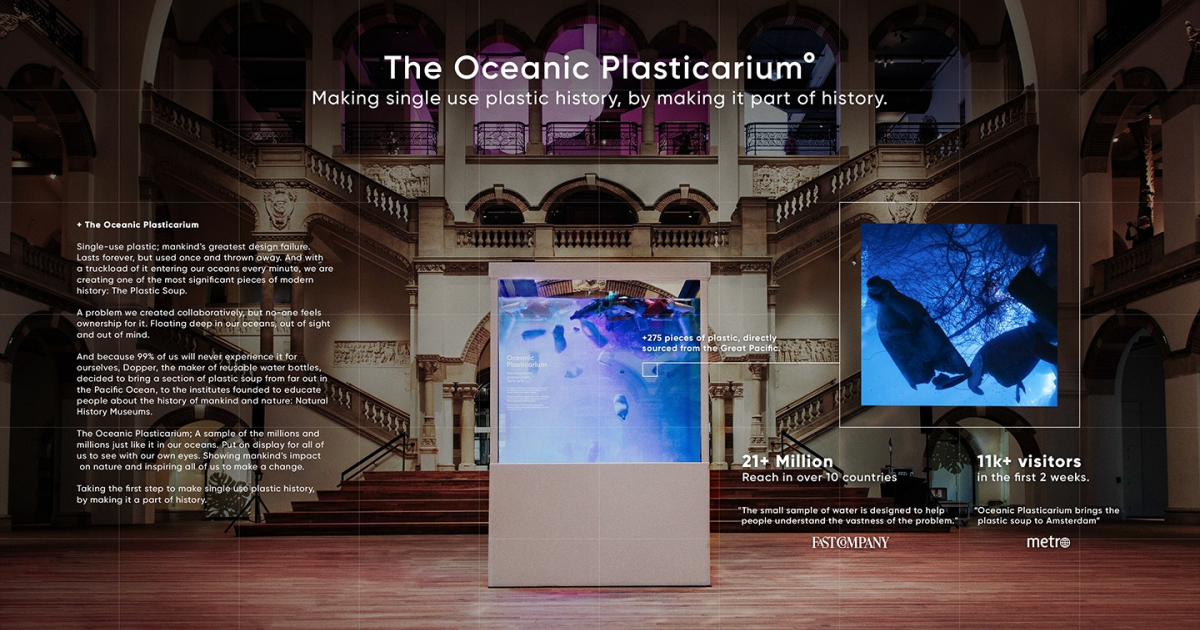
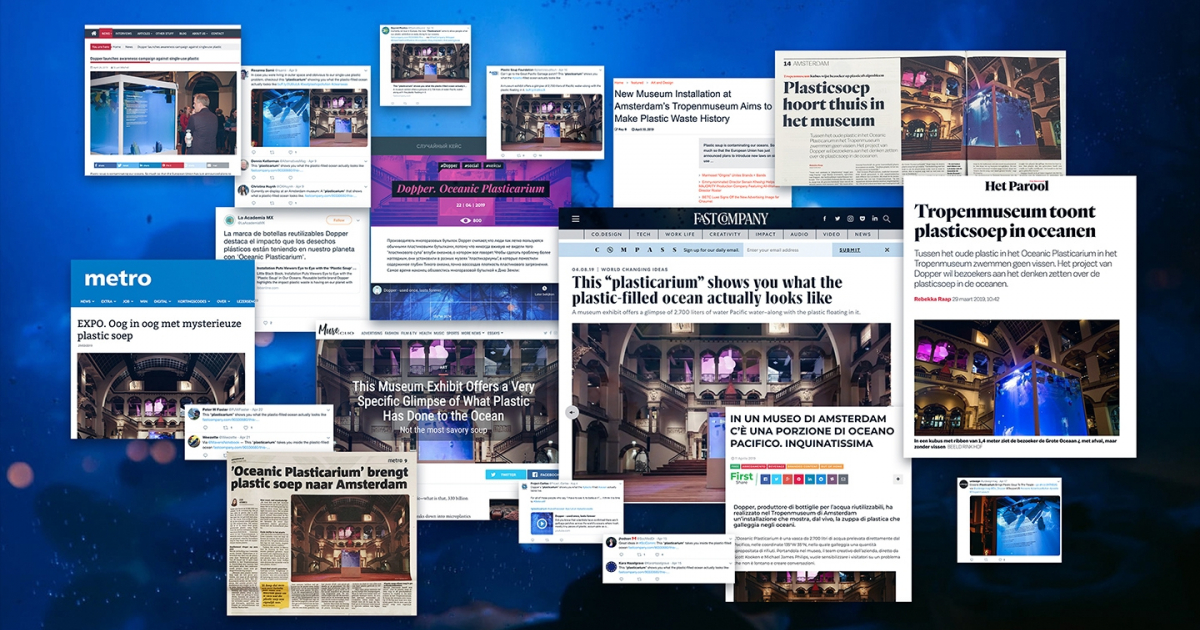
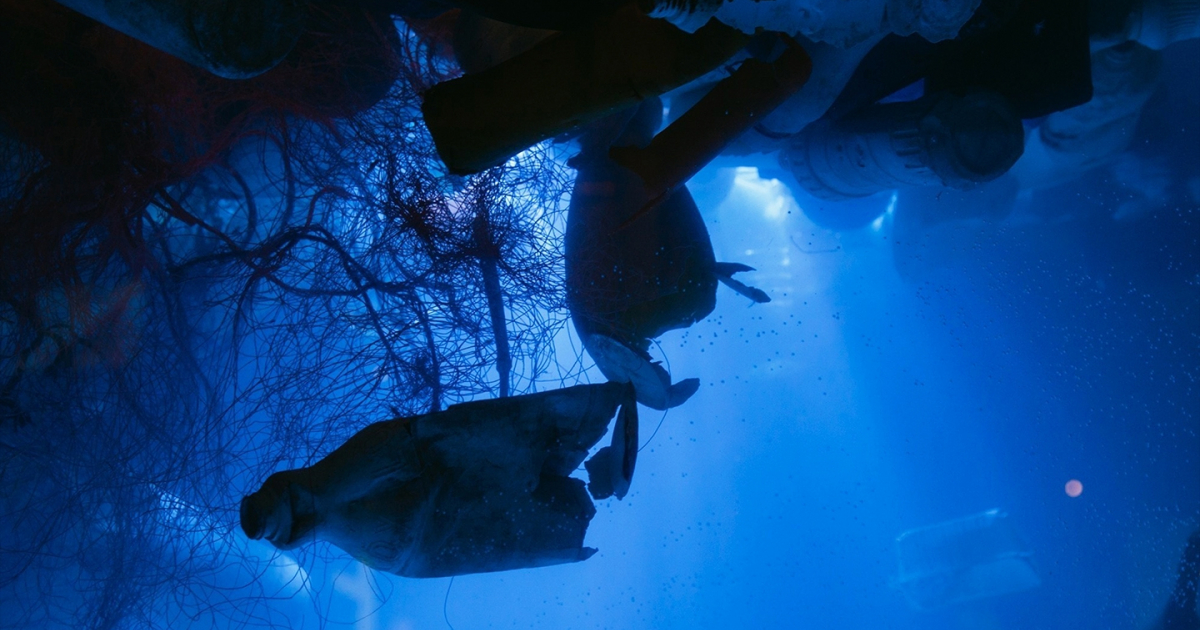
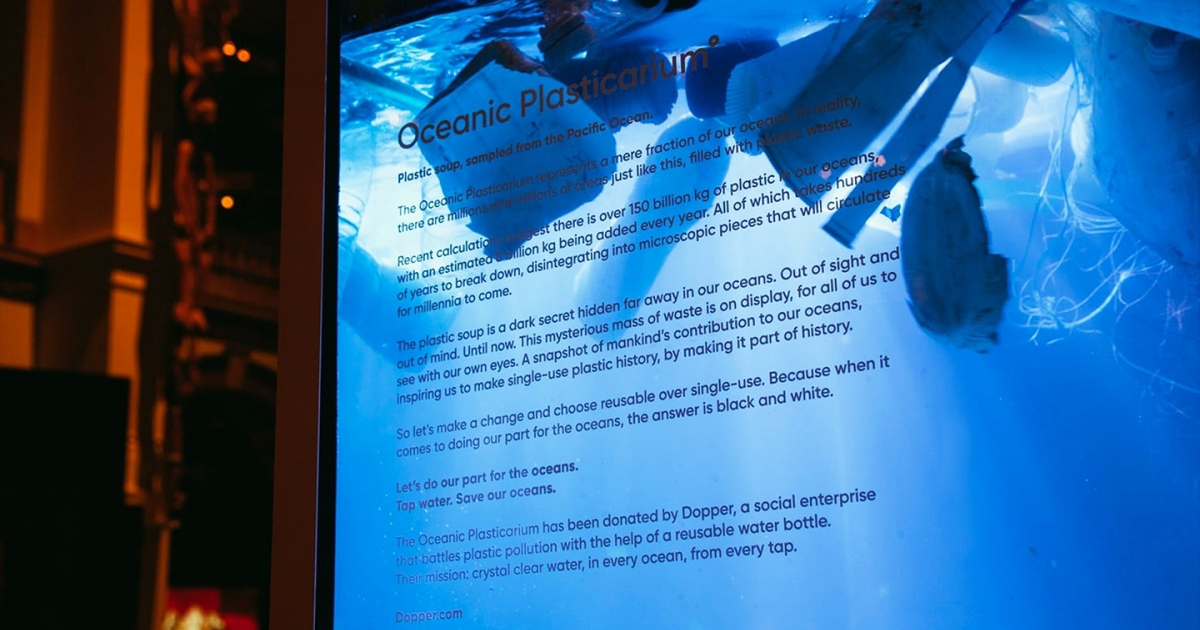
Jury Feedback
DESIGN – SPATIAL / NOMINATION
A simple ‘art installation’ causes you to think and make a change for this global world issue. The contrast of plastic ocean waste set within the beautiful Tropen Museum is unexpected and very powerful. Bringing the hidden issue of ocean plastic waste into a gallery for people to see is very relevant and a powerful metaphor. High impact in its smallness.
The jury felt that beyond the first impression and awe of the idea, there are no additional surprises. It’s not an interesting piece of spatial design in itself. However, the jury praised the educational impact on children visiting the Museum that directly influenced their behaviour.